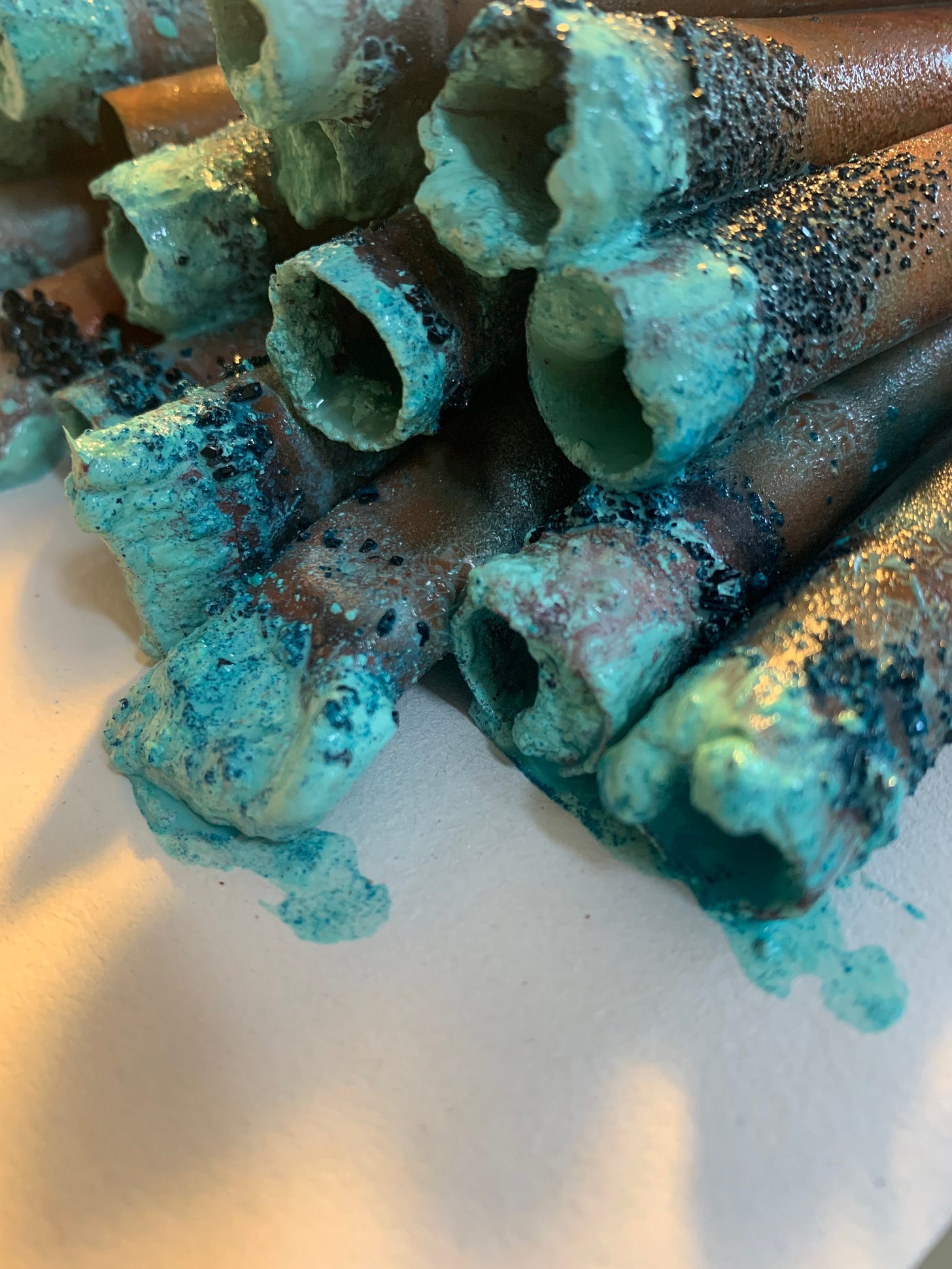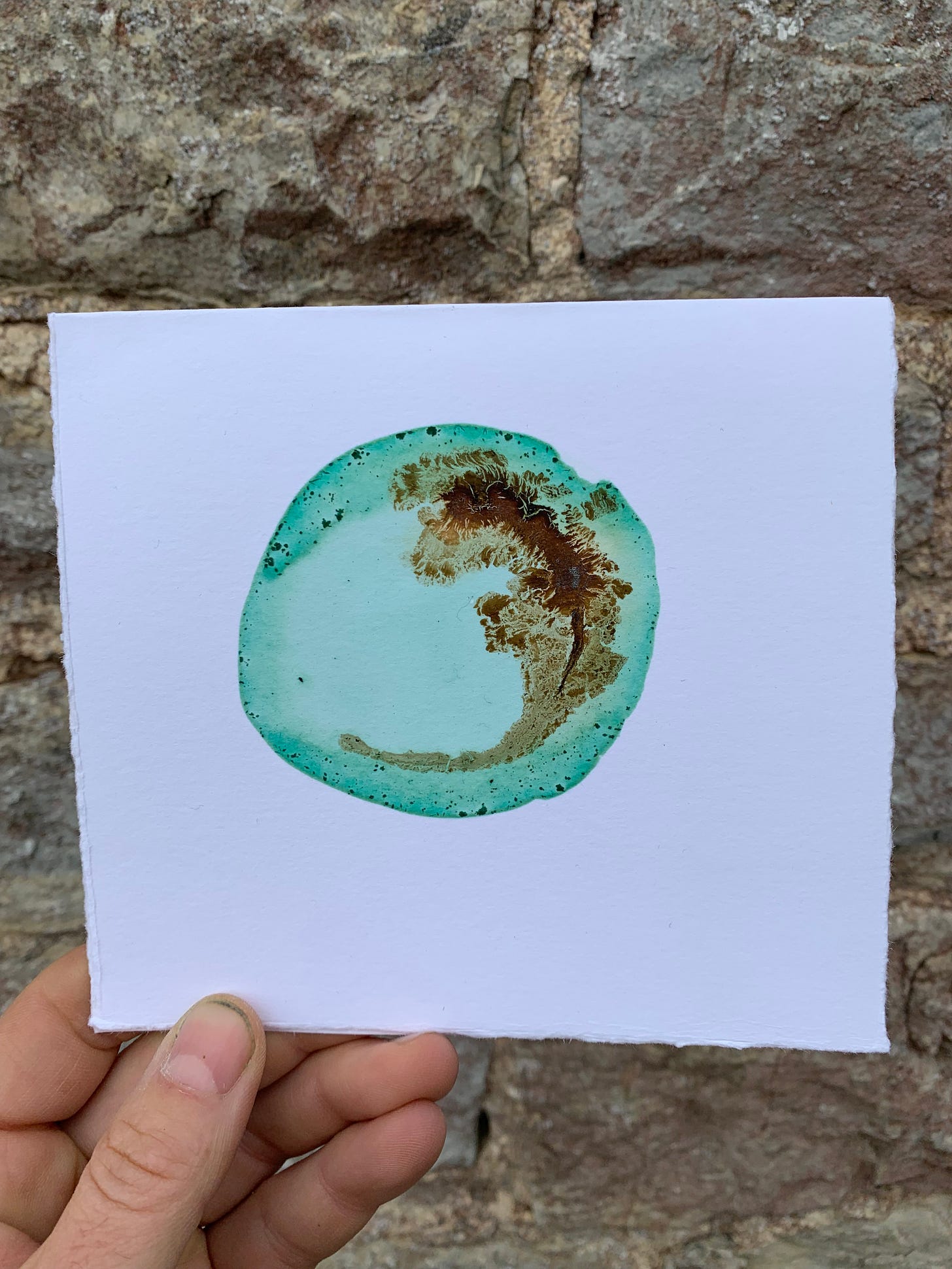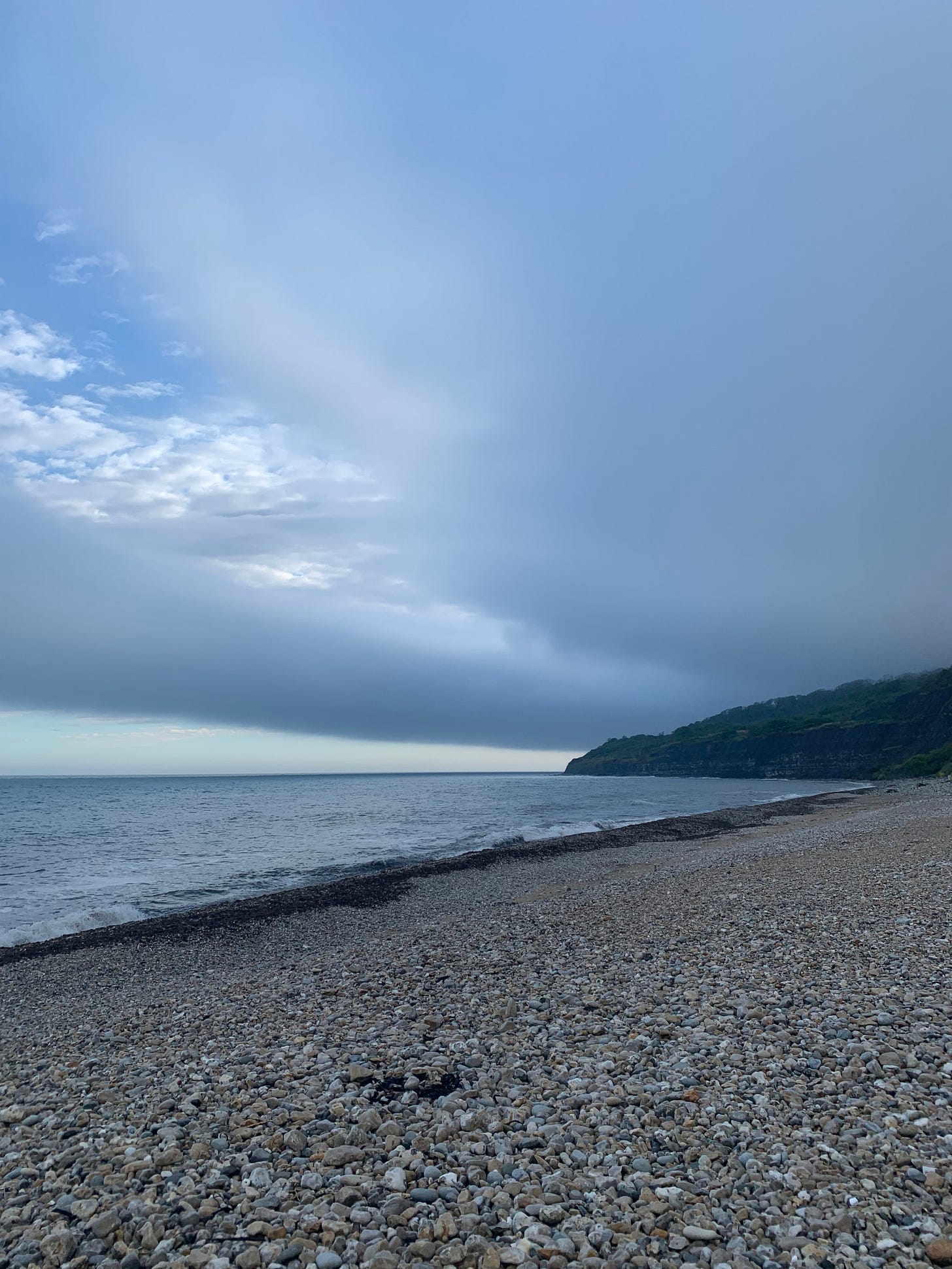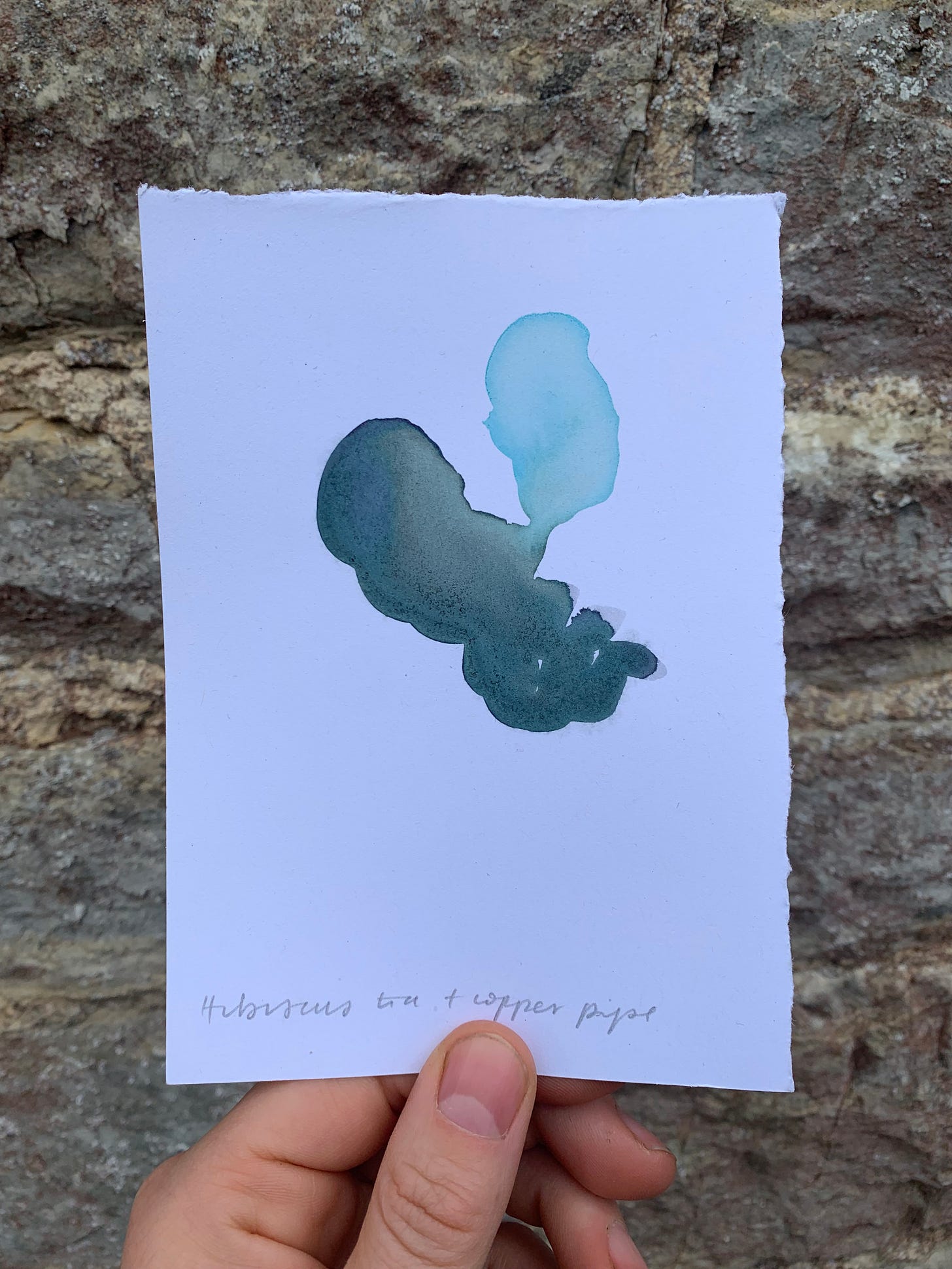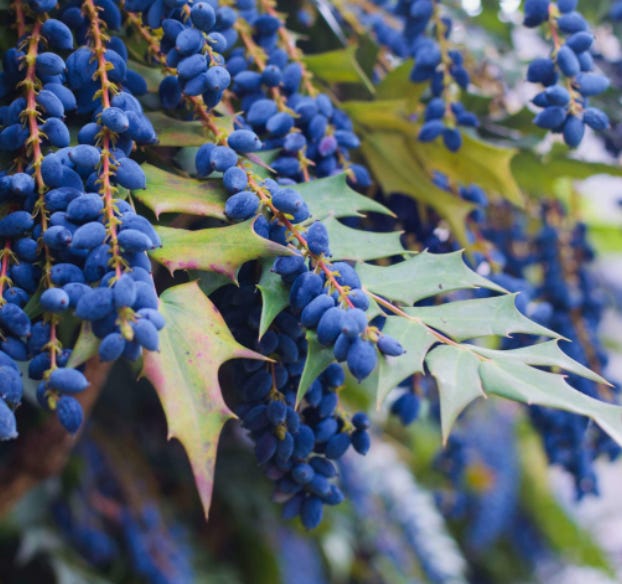Reflections in Blue
Making, seeing and feeling the colour BLUE and an invitation to make your own Mahonia Berry ink at home.
This early summer has brought with it a flurry of Sunday Market stalls on local streets, showing and selling the NATURAL INK. wares. It has been a delight to be up and about early on this quiet day, meeting folks who are drawn to the living colours presented on my old wooden table.
Many are initially attracted by the Copper Pipe Blue. Cooing at the mediterranean sea hue, its layers and complexities. Like bees to spring flowers, they hone in and move forward.
After so long without social time taking the form of human bodies moving through space together, with ease, I have been enjoying these encounters.
Humans and colour. The eye and light. Space and attention.
The colour of an object is determined by the wavelength of light that it reflects.
Objects absorb and reflect light differently. A lemon reflects yellow light, all the other colours are absorbed and so are not seen by our eyes.
We see higher frequencies of light as blue or violet, lower frequencies of light are seen as red and orange. Green light is in the middle.“What is Colour” - BBC Bitesize.
Copper + Oak
The high-frequency blues holding the depths of brown, woody Oak Gall have been tickling the colour taste buds this last fortnight. A unique interaction, conversation, and encounter between two colours, two living materials, right there on the page. Watching the oak dance, fragment and separate when it is added induces the inward ink gasp. An IIG, if you will. The moments that happen when you are playing and letting the inks do their thing and you feel touched by some earth magic.
The Blue of the Distance
The world is blue at its edges and in its depths. This blue is the light that got lost. Light at the blue end of the spectrum does not travel the whole distance from the sun to us. It disperses among the molecules of the air, it scatters in water. Water is colorless, shallow water appears to be the color of whatever lies underneath it, but deep water is full of this scattered light, the purer the water the deeper the blue. The sky is blue for the same reason, but the blue at the horizon, the blue of land that seems to be dissolving into the sky, is a deeper, dreamier, melancholy blue, the blue at the farthest reaches of the places where you see for miles, the blue of distance. This light that does not touch us, does not travel the whole distance, the light that gets lost, gives us the beauty of the world, so much of which is in the color blue.
A Field Guide to Getting Lost. Rebecca Solnit. Pg 29
It was this book that, in part, led me to leave my city life in Bristol and head out on rural adventures. November 2014 and I am sitting in a straw baled, thatch-roofed roundhouse at Tinkers after a bright day of coppicing hazel. Community has gathered for this necessary winter activity and we are all full of rich, warming stew and a day spent in the woods. I have A Field Guide to Getting Lost with me to read, and as I become embroiled in the evening’s conversation, with no screen in sight, my book drops to the side of my chair and gathers mud from my boots.
It is the job of artists to open doors and invite in prophecies, the unknown, the unfamiliar; it’s where their work comes from, although its arrival signals the beginning of the long disciplined process of making it their own.
A Field Guide to Getting Lost. Rebecca Solnit. Pg 5
I didn’t know where I was going, but I knew that I had found something there that weekend that I needed to follow. A belonging to a way of encountering the world at its most raw, material, elemental and necessary.
When I landed back in my flat in Bristol I fell into a feverish illness for several days. In a state between sleep and awake I dreamt my limbs were roots that stretched and spread outwards and down into the earth. An inkling beckoned. A quiet knowing in the bones that spoke wordlessly. It spoke of homecoming and life unfurling.
As I have been reflecting on the colour blue, how it appears in the world and through the history of art and culture, there have been many inkling nuggets found. So consider this the first BLUE INKLINGS. A series of blue musings. As we look ahead into our unique and unknown blue horizons I am remembering those who have walked before asking these similar questions and seeking meaning and connection through creating and sharing.
I would love to hear how blue appears in your world.
Do hit reply and share your words and/or images. I am curious about how people encounter colour in their world and the relationships that grow.
Colour Community
With a warm and hearty thanks to Jason Logan for sharing his Copper Blue recipe in his poetic book, Make Ink. Making living colour is a collective affair and a community endeavour. We can all explore these at once simple and complex processes.
I am struck by the times a conversation at an event or market has spurred someone to have a go at bubbling a pot of plant colour on their stove at home, and the joy on their faces and in their words as they share their findings with me.
The underlying energy that fuels this NATURAL INK. project is that of my den making 8-year-old self who would blend plants and earth in old pans under leylandii trees to make mud pies. The carefree delight of scuffed trainers and grass-stained knees.
Make Your Own Ink At Home
I am eager to share with you how to make not one, not two, but three (and more!) colours from the deep blue MAHONIA BERRIES, that are out and ripening at the moment, in the southwest of England. This I intend to share with you in my next INKLINGS, or two.
Now, the birds LOVE these berries, so do get gathering a couple of handfuls (watch out for the prickles) when you can. Pop them in a box or bag in the freezer to preserve and keep an eye out for the INKLINGS email.
But where to gather?
Over the last two years, I have had lovely interactions with folks in my neighbourhood, asking them if I can gather some berries from their trees. They are also prominent plants in city centres and supermarket car parks. You may have noticed their vibrant yellow flowers dazzling you in the winter months.
Making colour begins with noticing.
When you notice a Mahonia bush, get gathering with consideration to the other beings who feed on the berries* and I will see you again soon,
Kathryn
*depending on the size of the pan you have one or two handfuls of berries will do. The ink will go a long way. However, there is nowt more disappointing than burning a pan of precious ink making materials because the pan is too large and water + material to little. A little sauce/milk pan will do. (Especially for ink making is best practice)
—-
BLUE for the ears:
Misty Blue - Dorothy Moore
Symphony in Blue - Kate Bush
A few spots left for Green Scythe Fair Earth Pigment Introduction workshops on Saturday 11th June. Contact hello@kathrynjohn.co.uk to book either 10-12pm or 2-4 pm sessions @ £25 per person





